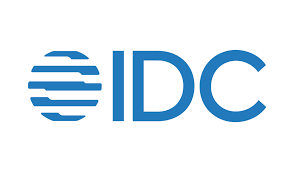PwC Cloud Intelligence
Watch now
Embrace a future where CIOs and lines of business can focus on strategic initiatives

Increase speed to market with configurable events and services and a no-code journey designer
Cloud Intelligence, a PwC product, helps empower business and IT to build differentiators and deploy solutions within days to respond to changes in market and customer behaviors.

Power change and reinvention and respond to market dynamics with our pre-built connectors library
Quickly create new business capabilities in response to changing market conditions with a library of reusable pre-configured connectors as well as built-in traceability, security and compliance components.

Overcome technology complexity with an integration fabric for business journeys and solutions
Improve business transformations by standardizing customized solution creation and delivery, overcoming common cloud adoption barriers, plus reducing the footprint and overhead across many technology areas.
Designed for today’s needs
Built with the future in mind, Cloud Intelligence can provide the ultimate versatility to design and build business processes, utilizing sophisticated event-based choreography, which means there is no single point of failure. Each service and event can execute independently within the broader framework of the architecture.
Engineered with security top of mind and provides sector-specific functions to support regulations such as HIPAA and Sarbanes-Oxley. Designed with zero-trust authentication and verification services to help data flow securely among platforms.
Crafted with PwC’s deep industry experience, incorporating not just advanced technical know-how but also the deep business and industry knowledge and experience of our thousands of on-the-ground professionals.
How does Cloud Intelligence benefit you?

Chief Information Officer and Chief Technology Officer
IT executives should deliver a cloud strategy that accelerates business goals in a complex and evolving technology environment. Cloud Intelligence helps achieve this through a cloud-agnostic design, pre-built connectors and low-code integrations that allow for ongoing innovation at a rapid pace.

Line of Business Executive
Business leaders should respond to changing market dynamics quickly. They have the know-how and the motivation to address opportunities and challenges, but can get stalled in their company’s IT project queue. Cloud Intelligence can help the IT department reduce its project backlog, while also helping rapidly deliver the solutions LOB executives need.

Chief Risk Officer
Cloud Intelligence helps the Risk team clearly see the business process and technical stack in a single consolidated platform. Business journeys can be used to monitor technical and operational risk based on business criticality and associated IT tiering, helping to extend capabilities and greatly simplify BCP/DR. Integrations with GRC systems help make remediation, audits, risk reviews and compliance a breeze with the available CI metadata for business processes and services.

Chief Marketing Officer
Because Cloud Intelligence captures actions within the ecosystem by component, CMOs can consistently identify customer behaviors. This near-real-time data enables analytics systems to update and improve models so that the marketing team can change scenarios to reflect consumer sentiment and behavior in real time.

“The end-to-end Cloud Intelligence solution is built with the essential needs of enterprises today, linking modern and legacy core applications with ecosystems and data pipelines, and providing connectors, workflow design capabilities, a unified control plane, and observability and exception handling components.”
IDC Market Perspective:PwC Analyst Day 2023 (December 2023, IDC #US51281223)
Connect with us
Let’s talk about how Cloud Intelligence can help you.
Fazir Manthodi
Principal, PwC US
PwC Products & Solutions Leader, PwC US








